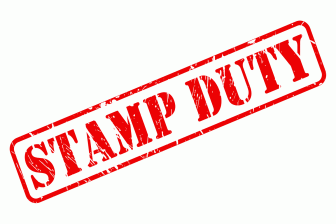 The tax take from stamp duty has increased to pre-pandemic levels at £15.4bn, up from £14.1bn the previous year.
The tax take from stamp duty has increased to pre-pandemic levels at £15.4bn, up from £14.1bn the previous year.
Despite high mortgage rates and the average buyer paying £9,937, two-thirds of the transactions were residential purchases, accounting for £11.7bn of receipts.
The average stamp duty land tax (SDLT) payment of £9,937 in 2022-23 remained below the £11,202 recorded in 2021-22, and yet, somewhat surprisingly, given the fragile state of the housing market, total residential tax take surprisingly increased from the 2021-22 period, up by over £1.5bn from £10.1bn. For the final quarter of 2022-23, however, the figure dropped significantly, down 25% on the corresponding quarter in 2022.
Pre-covid, the highest total net SDLT receipts were collected in 2017-18, with £12.9bn worth of receipts; £9.2bn in residential and £3.6bn in non-residential properties. This fell to £8.6bn overall in 2020-21 owing to the impact the pandemic had on transactions.
Adrian Lowery, financial analyst at Evelyn Partners commented: “Although SDLT receipts have been volatile in recent years, the property tax’s effectiveness as a revenue-raiser for the government is not in doubt.
“SDLT receipts for the 2022/23 tax year are estimated at £15.40bn – a 9.2% rise from on the previous year. The latest finalised HMRC figures show that receipts for 2021/22 increased by 63% to £14.10bn from £8.67 billion in 2020/21.
“But SDLT earned just £3.68bn for the Treasury in 2000/01, so the take in 2022/23 represents a four-fold nominal increase in just over two decades.”
Residential SDLT figures set to increase in March 2025. Currently, homebuyers pay SDLT on properties over £250,000, this is set to be halved to £125,000, forcing more into paying the levy.
However, Net non-residential receipts have returned to similar figures to pre-covid: £3.64bn in 2022-23, while this dropped to £2.6bn in 2020-21.
The total number of transactions has fallen by around 200,000 to 1,174,100, with the majority (1,066,300, 89%) being residential properties.
In Q4 of 2022 there were 331,400 SDLT transactions, 12 months later this has fallen by 20% to 237,700. The decline is mostly from residential transactions which fell by almost 70,000, while non-residential transactions grew by 3,000.
Jonathan Stinton, head of intermediary relationships at Coventry Building Society, commented: “Stamp duty is an easy cash grab for the Treasury but a huge burden on homebuyers. Over the years, different Chancellors have dropped hints and sometimes tinkered around the edges, but it’s been obvious for a long time that this is a tax that needs to be properly reviewed and reformed.
“Average stamp duty bills have almost doubled over the past 10 years from £5,600 in 2013. But reducing this burden on homebuyers could still benefit the economy – and the Treasury’s coffers – as people could spend the extra cash on improving their new home, boosting the retail and services sectors and returning some tax revenue through VAT.”


Comments are closed.